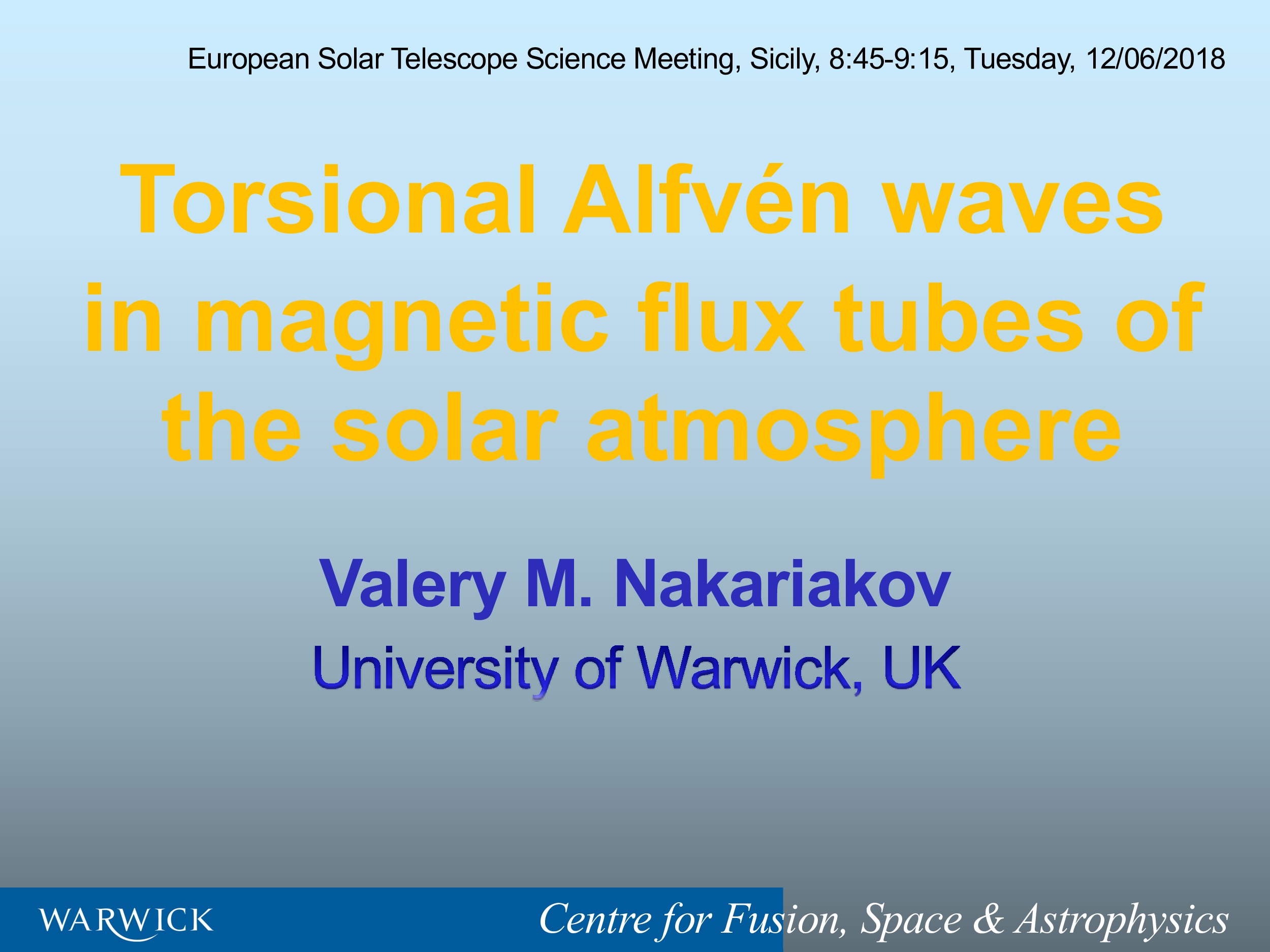Affiliation
University of Warwick, UK
Main category
Natural Sciences (Astrophysics and Astrononmy)
Abstract
In the solar atmosphere, the perpendicular spatial scale of Alfvén waves is typically much shorter than the parallel scale, and hence the waves appear in the torsional form. Similar to the linearly polarised plane Alfvén waves, torsional waves nonlinearly induce compressive perturbations by the ponderomotive force. The modification of the local plasma density and magnetic field strengths, and hence the Alfvén speed, leads to the nonlinear self-interaction of Alfvén waves, accompanied by the nonlinear cascade and enhanced damping. In the case of torsional waves, the ponderomotive effect is much richer than in the case of plane Alfvén waves, as torsional waves are essentially oblique due to their intrinsic dependence on the radial coordinate. The ponderomotive force leads to the induction of compressive flows in the perpendicular direction. Also, the radial non-uniformity of the torsional wave amplitude makes the wave speed dependent on the radial coordinate too, which causes phase mixing. In waveguiding magnetic flux tubes, nonlinearly induced compressive perturbations are found to be of three types: the longitudinal flows propagating at the Alfvén and tube speeds, respectively, and transverse flows propagating at the Alfvén speed outside the flux tube. The efficiency of the nonlinear cascade in torsional wave could be significantly weaker than in plane Alfvén waves. We also discuss the typical observational signatures of torsional waves that are important for their identification in the EST data, with implications for the coronal heating problem and MHD seismology.
Do you have problems viewing the pdf-file? Download presentation
here
If the presentation contains inappropriate content, please
report the presentation. You will be redirected to the landing page.
